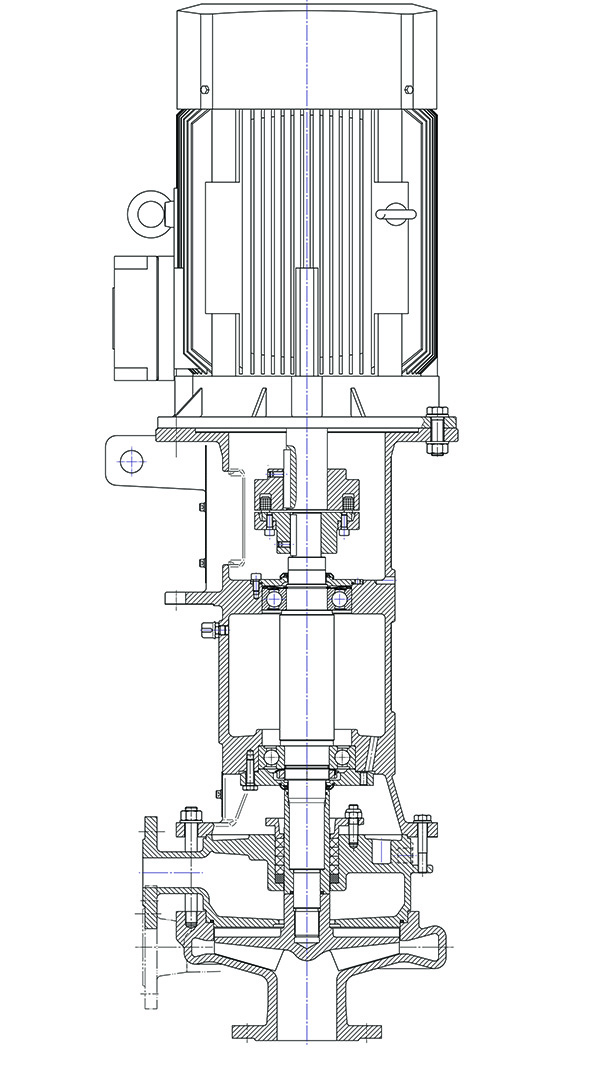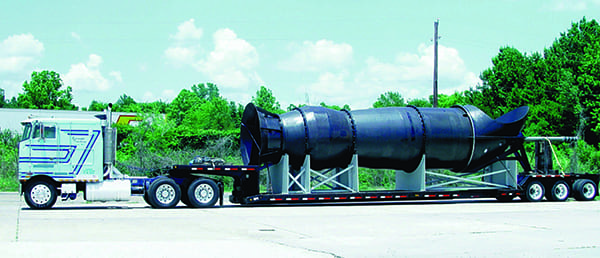Equipment Showcase: Pumps
Pumps and pumping systems have multiple applications in power plants, and are generally centrifugal and positive displacement pumps. Centrifugal pumps use an impeller to move fluid through the application process, with the velocity of the rotating impeller imparting energy on the liquid, causing a rise in pressure proportional to the fluid’s velocity. Positive displacement pumps move liquid with pressure generated from resistance to movement of the liquid downstream of the pump. The liquid being handled usually determines which pump technology to use. Some of the leading manufacturers and service companies for pumps serving the power generation industry are featured here.
Centrifugal Pump Designed for Power Plants
 |
|
1. This rendering shows the internal design of the VKKS pump. Courtesy: Bungartz |
The VKKS from Bungartz, specially developed for use in power plants, represents a high technical achievement. From the V-AN series of non-suction centrifugal pumps, it is designed for condensate application of boiling media under atmospheric conditions. The vertical pump adapts automatically to fluctuating inflows and counter-pressures in a cost-efficient and reliable way. Its unusual design makes it safe to run dry. The high intrinsic safety—typical for this series—also allows the VKKS (Figure 1) to completely dispense with additional equipment such as min/max switching, speed control by means of frequency converters, or flow control. This, together with maintenance intervals of more than three years, results in savings that are even greater if the planning process is carried out at an early stage. With the VKKS, there is no need to build pits, scaffolding, or buffer tanks, which would otherwise lead to considerable investment costs. Bungartz, Dusseldorf, Germany
bungartz.de
Atlas Copco Features High-Flow Pumps
 |
|
2. This PAS series pump from Atlas Copco is easy to transport, with multiple trailer configurations available. Courtesy: Atlas Copco |
Atlas Copco Power Technique North America features three high-flow pumps in its PAS lineup: PAS 100 (a 4-inch, 1,232 gallon per minute [gpm] pump), PAS 150 (a 6-inch, 1,430 gpm pump), and PAS 200 (an 8-inch, 3,655 gpm pump). The PAS open-frame pump systems (Figure 2) consist of a highly efficient diaphragm pump with a semi-open impeller and a large separator, allowing the pumps to pass true 3-inch spherical solids. Air is separated from the liquid and sucked by the vacuum pump, making automatic and efficient priming possible. Both wet-prime and dry-prime options are offered. The PAS pumps include hinged doors for easy access to the pump housing, making them simple to service and clean. They are easy to transport with multiple trailer configurations available. Exhaust emissions compliance is met by the Tier 4 Final engine, which is designed for low fuel consumption. Atlas Copco North America, Parsippany, New Jersey
atlascopco.com
Chicago Pneumatic Offers Dewatering Pumps
 |
|
3. Chicago Pneumatic offers small, lightweight dewatering pumps, known as CPWE, which work in a variety of applications. Courtesy: Chicago Pneumatic |
Chicago Pneumatic Power Technique features CPWE, a range of seven drainage pumps and two sludge/drainage pumps (Figure 3). CPWE pumps are ideal for customers in the construction and rental industries, where small, lightweight, portable, and easily maintained pumps are required to perform daily jobs quickly. They provide fast and efficient dewatering for a wide variety of applications. The design of the pump’s outer jacket for cooling and thermo protection keeps it running safely under various conditions. All pumps can handle fluid temperatures up to 95F and have a maximum submerged depth of 16 feet. Chicago Pneumatic, Rock Hill, South Carolina
cp.com
New Pump Design Saves Diesel Margin for Nuclear Plant
 |
|
4. A Sulzer water pump for use in a nuclear power plant is transported to the customer. Courtesy: Sulzer |
Nuclear power facilities are equipped with large diesel generators that supply emergency power for important safety circuits when normal power supplies are lost. Of these circuits, the ultimate heat sink (service water) pumps have one of the highest priorities, but they can impose a significant load on the diesel generators. For one site, Sulzer has applied its pump design expertise to improve performance and reduce power requirements while continuing to comply with regulatory standards. The new Sulzer pumps (Figure 4) at the site come from the SJT range of cooling water pumps, which are large-flow vertical pumps that are engineered to order to ensure the most efficient design is achieved. The pump operates at 1,775 rpm and requires a 300-hp (225-kW) drive motor to deliver 5,320 gallons per minute. The change in the pump design saves about 100 hp (75 kW) per pump, freeing up an additional 600 hp (450 kW) from the emergency diesel generators. The new pumps mean levels of vibration have dropped considerably, especially at minimum flow, and the safety relief valves are no longer being challenged. In addition, the material upgrades that were included in the new designs have brought further benefits, increasing the mean time between maintenance. Sulzer, Winterthur, Switzerland